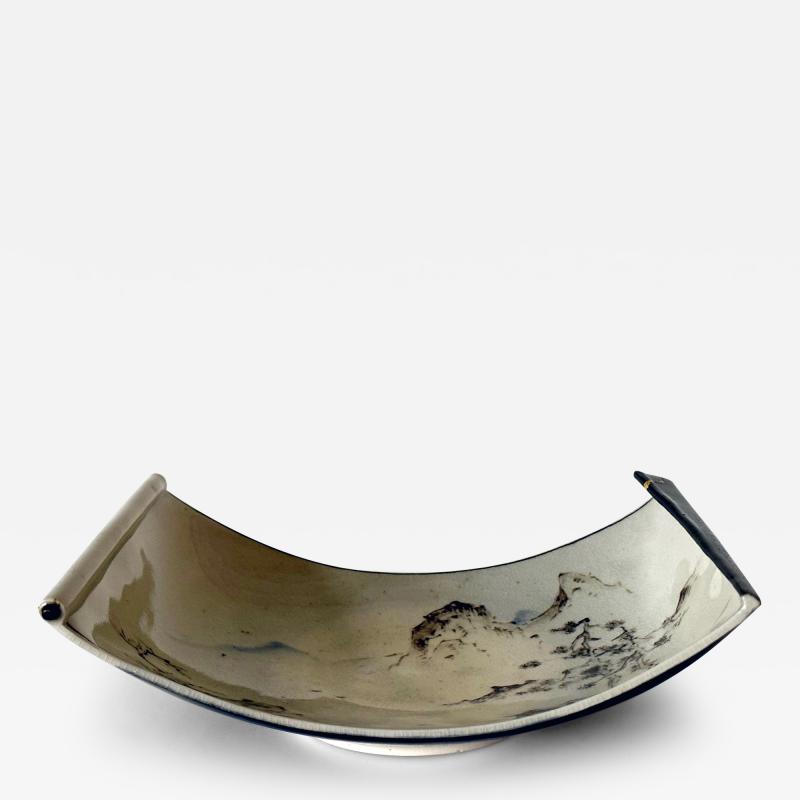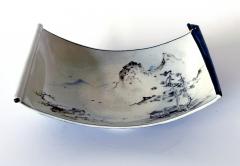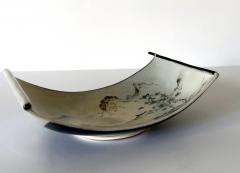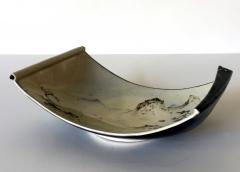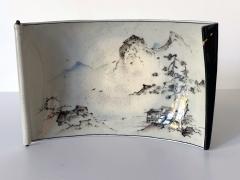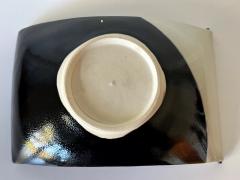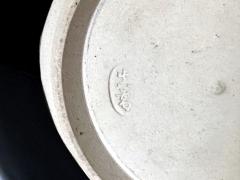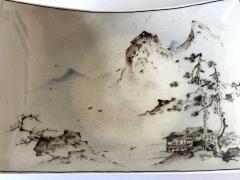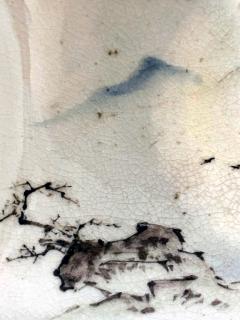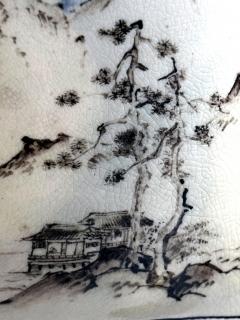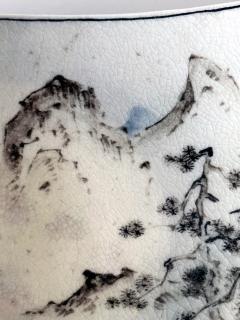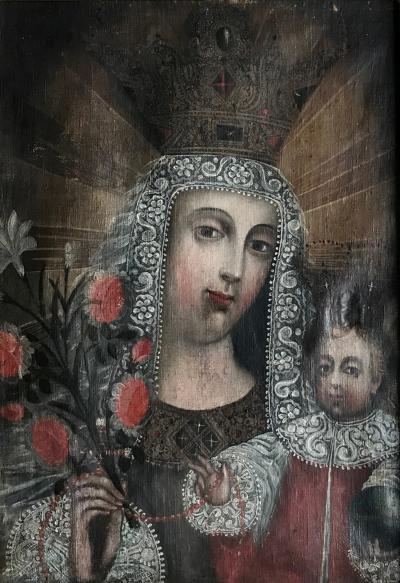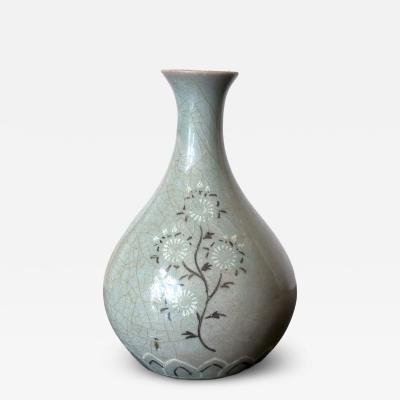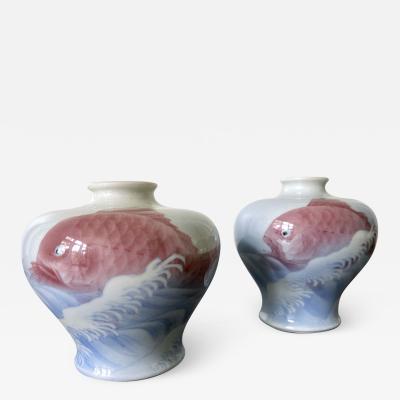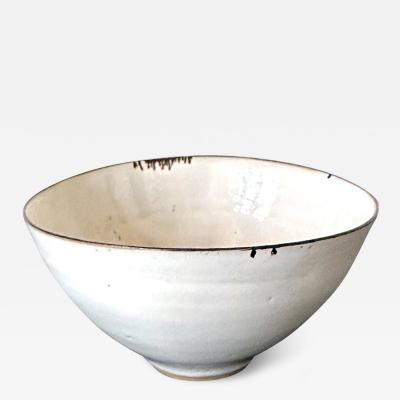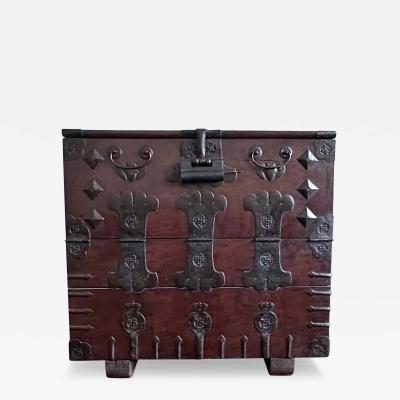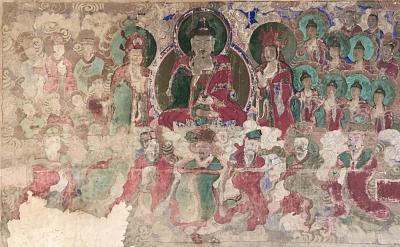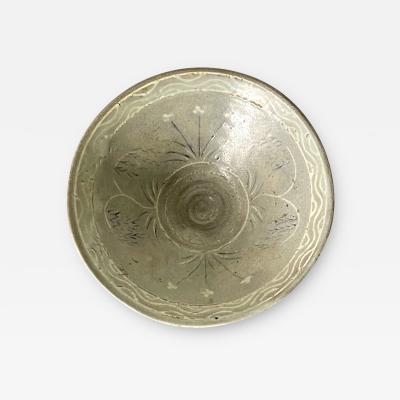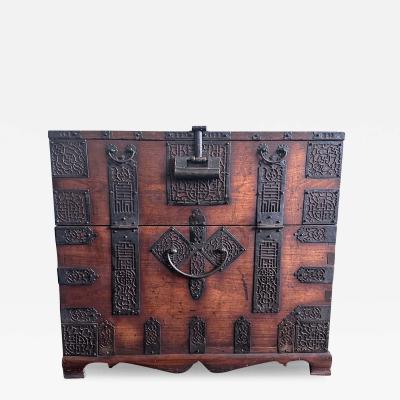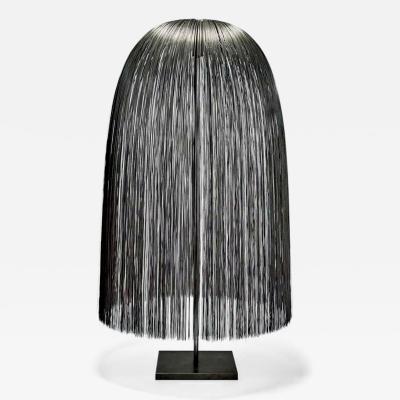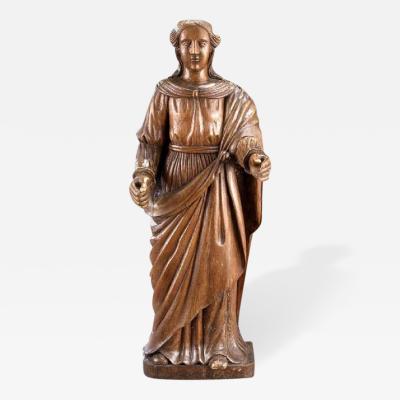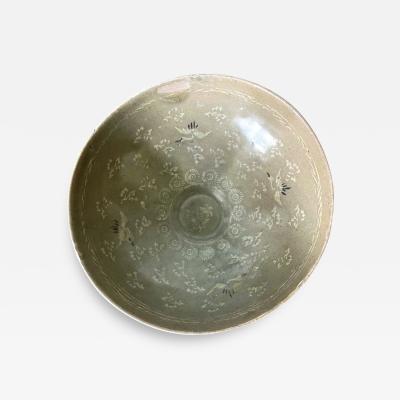Rare Japanese Porcelain Painted Footed Dish Makuzu Kozan
-
Description
A rare footed dish in the form of an open scroll painting with literati landscape from the studio of Japanese Potter Makuzu Kozan. Also known as Miyagawa Kozan (1842–1916), Makuzu was one of the most established ceramists from Meiji Period. Born as Miyagawa Toranosuke, Kozan established his pottery studio in Yokohama around 1870s and later became one of the appointed artists to the Japanese Imperial household. His work was exhibited in many international fairs that the Meiji government participated at the turn of the century and won many grand prizes.
The unusual design was a smart play with both form and concept. The scroll opens to reveal an actual ink landscape painting that depicts a thatched hermitage under towering pines set in a mountainous scenery. Faint blue color was used to depict peak afar in the mist and also a very subtle full moon shape vignette, both very poetic touch with an intention to create a dimensional ambience. A small grove of bamboo and a sculptural plum tree with strokes of branches bearing the flowers complete the concept of "Three Winter Friends", a literary and pictorial metaphor of purity in a gentleman's character. The tropic of hermit who was tired of the corrupted court life and retreated back in nature has always been a favorite for ancient Chinese composition in both literature and art. This bowl embodies such a spirit. The bowl was supported by a foot ring and the underside was partially glazed black to add a strong visual effect. The bowl was likely used during a themed tea ceremony to present the sweets to the esteemed guest. It was signed with an impressed seal "Makuzu" on the base. The bowl has a very small historical kintsugi repair on one corner and a speckle on the bottom as well. The golden lacquer was intentional chosen to contrast the black glazed background, a wabi Sabi effect that was pursued to the aesthetic perfection.
A nearly identical dish with a variation of the painting is illustrated (no 40) on page 64 in the book "Bridging East and West: Japanese Ceramics from the Kozan Studio" by Emerson-Dell. -
More Information
Documentation: Signed Origin: Japan Period: 1900-1919 Materials: ceramic Condition: Good. Fine antique condition with small spotted historical kintsugi repair as shown. Creation Date: 1900s Styles / Movements: Modern, Art Pottery, Asian Patterns: Asian/Oriental, Geometric, Handmade Incollect Reference #: 680867 -
Dimensions
W. 8 in; H. 2.75 in; D. 5.3 in; W. 20.32 cm; H. 6.99 cm; D. 13.46 cm;
Message from Seller:
Tishu, based in Atlanta, GA, offers a diverse collection ranging from Neolithic art to 20th-century collectibles, with a focus on Mid-century design, Japanese and Korean art, Asian textiles, and Contemporary Aboriginal art. Driven by a passion for timeless beauty, the gallery is open by appointment only and offers works that span 5,000 years of history. Reach them at 305-400-0561 or tishu@tishugallery.com.















